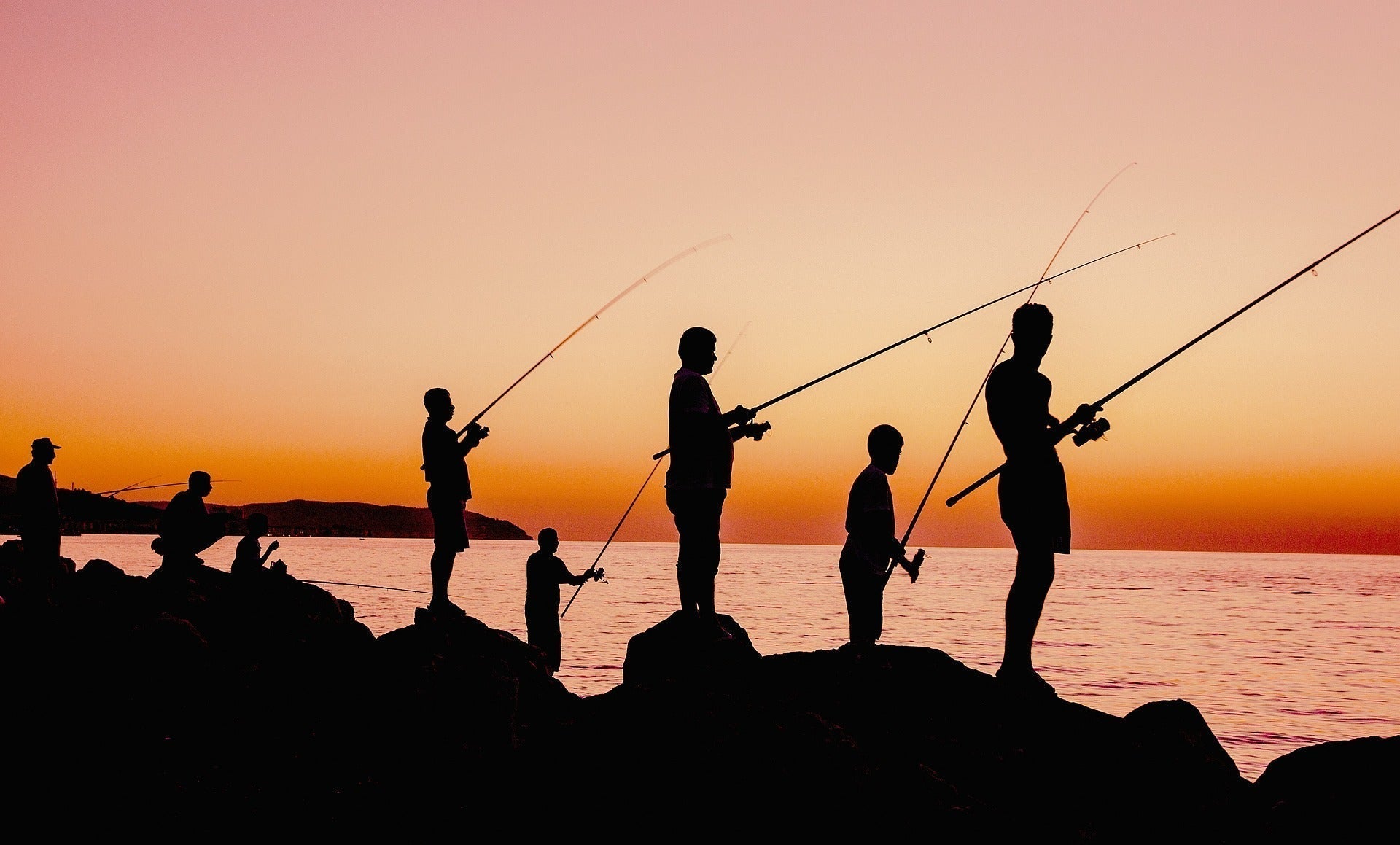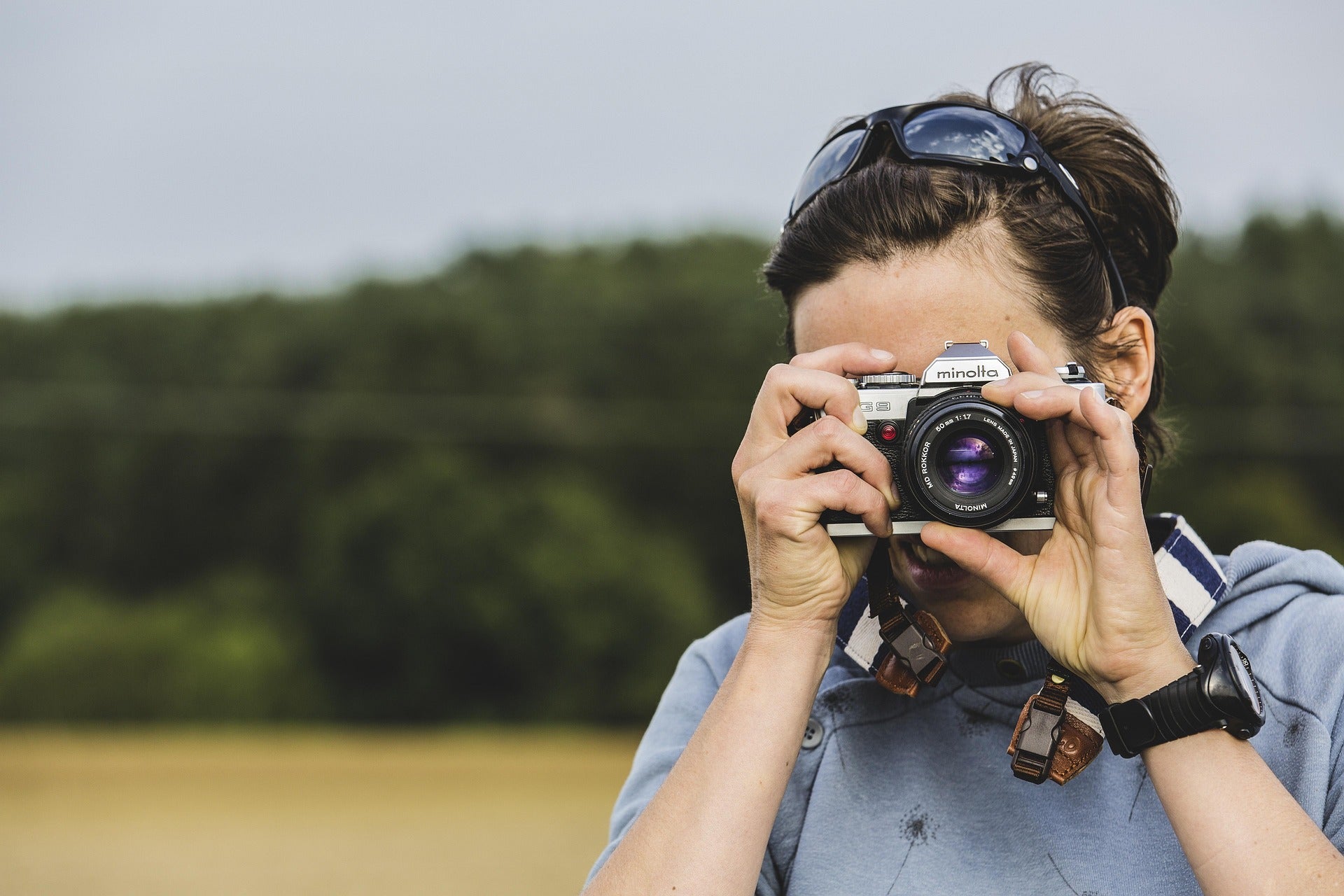
Silhouette photography: techniques for dramatic shots
Minimalist photos, in which the main subject is only recognizable as an outline, have something mysterious about them and leave room for the viewer's imagination. Creative shadow images created by photography at sunset are popular. However, the strong visual effect of silhouettes can also be achieved with many other scenarios and motifs.
For a silhouette photo, you need to use the backlight correctly. Ideally, this hits the subject of the photo horizontally from behind, for which there are various possibilities with natural and artificial light sources. The front remains underexposed and appears very dark or completely black. If you would like to learn how to photograph silhouettes, follow the tips in this article. You will quickly achieve appealing results.

Use natural light for creative shadow images
The golden and blue hours during sunrises and sunsets are particularly suitable for silhouette photography. This is when the sky is full of atmospheric colors, the light hits the back of your subject horizontally and is weak enough to prevent overexposure. Especially with minimalist image composition, it is worth keeping an eye on the essentials - and this also applies to the equipment: a compact bag or a customizable camera backpack makes working on location noticeably easier.
Silhouette photos can also be taken during the day in natural light. In seasons with low sun, the camera can be positioned well behind the model. Cloudy days are also suitable for shadow pictures if the background is bright enough.
A popular natural light source for silhouette photography is daylight that falls through a window or an exit into a dark area. This works from indoors, halls and tunnels if you are shooting in the direction of the light.
Using backlighting correctly with artificial light sources
With artificial light in a darkened interior, you have complete control over the light source, its strength and positioning. Ideally, you should have a studio with professional lighting at your disposal. But you can also achieve creative shadow images with a lamp, a flash or candles.
In the dark, there are also artificial light sources outdoors, which often allow particularly dramatic lighting for silhouette photos. These include street lamps, car headlights and billboards. Even city lights and sufficiently bright reflections on a wet street are suitable backgrounds.
If you want to remain flexible with changing light sources, you will benefit from a camera bag with a modular interior layout. This allows the equipment to be transported safely and clearly, even if the shoot changes location spontaneously.
Selecting and positioning the subjects
Tips on subject selection and image composition are particularly important for silhouette photography. This is because the colors and surface textures of the subject largely disappear in the images, which is why a clearly recognizable and expressive contour is required.
People are popular subjects, either in motion, in special poses or as a side portrait that shows the contours of the face. Buildings with unusual shapes, the skyline of a city and striking landscapes with mountains or rocks are also suitable. Trees, plants and animals can also create aesthetic outlines, as can everyday objects.
The strong pictorial effect of silhouettes can only be achieved with a clearly recognizable and expressive contour. For example, a bare tree with interestingly shaped branches can create a more striking image than one with a closed crown of leaves. A dandelion with its delicate umbrellas looks more fascinating as a shadow than a rose. If you like to play creatively with shapes, you should always have your camera with you - preferably held securely with a high-quality camera strap or a discreet hand strap for maximum freedom of movement.
If the photo shows several objects, they should not merge into one large dark area. There may be points of contact, for example when people hold hands. However, avoid excessive overlapping.
Not just for sunset photography: background and composition
A suitable background contributes to the strong image effect created by a silhouette. The calm atmosphere during the blue hour conveys something peaceful. Gray storm clouds, on the other hand, allow for dramatic lighting. However, the background should not distract from the subject, but should only ever form the frame.
Leave enough space around your subject. The contours will only really come into their own if the picture does not look too full. Flat landscapes are well suited as an outdoor setting, as the subject can stand out effectively from the background. To prevent it from blending in too much with other dark areas in the foreground, it can be useful to take photos from a lower position.

Creative silhouette photography and tips for effects
You have many options for individualizing silhouette photos through your choice of subjects and background. There are also a number of options for special effects. One of these is the partial silhouette. Unlike the perfect, completely dark contour, this shows some details of the object. To achieve this, the front is slightly exposed with the help of another light source. You can achieve special portrait photos with light coming in from the side so that only half of the face is recognizable and the other half remains dark.
A halo effect is created when the subject of the photo covers the light source but it shines beyond its edges. This results in a ring of light that particularly emphasizes the subject. Rim light works in a similar way. The back of the object is illuminated so that only the edges shine, possibly including some details. In this way, it is even possible to create silhouettes against a dark background.
Light and contrast in the photography of silhouettes
The right balance of light and contrast in photography is particularly important for creative silhouettes. It is important to keep the subject underexposed. Therefore, switch off the flash.
Ideally, you should use the manual mode, which allows you to make all the settings of the exposure triangle yourself and test the results. Typical values for silhouette photography, which must be adjusted individually, are 100 to 200 for the ISO value, f/8 to f/16 for the aperture and 1/250 to 1/1,500 second for the shutter speed. An extremely fast shutter speed of 1/1,500 second may be necessary to freeze movement, for example when photographing an unsteady subject or in windy conditions.
Silhouette photography is also possible with fully automatic compact cameras and smartphones. To do this, you have to outwit the automatic mode, which always tries to avoid underexposure. On a smartphone, tap on a bright area in the background before taking the photo to adjust the exposure.
To keep the settings while focusing on your subject, activate the exposure lock. On many smartphones, this works by touching the screen for a longer period of time and on cameras by not pressing the shutter release button all the way down.
Conclusion: learn to photograph silhouettes with a little practice
Playing with light and contrast in photography creates expressive and unusual shadow images. The technique is not particularly complicated, so you can quickly achieve appealing results. There are a few tips to keep in mind, especially when it comes to image composition, to create expressive silhouette photography.
Well-organized equipment helps to focus on the image idea. Robust bags and well thought-out accessories will support you when it counts - especially when shooting against the light, which often does not allow for a second attempt.


